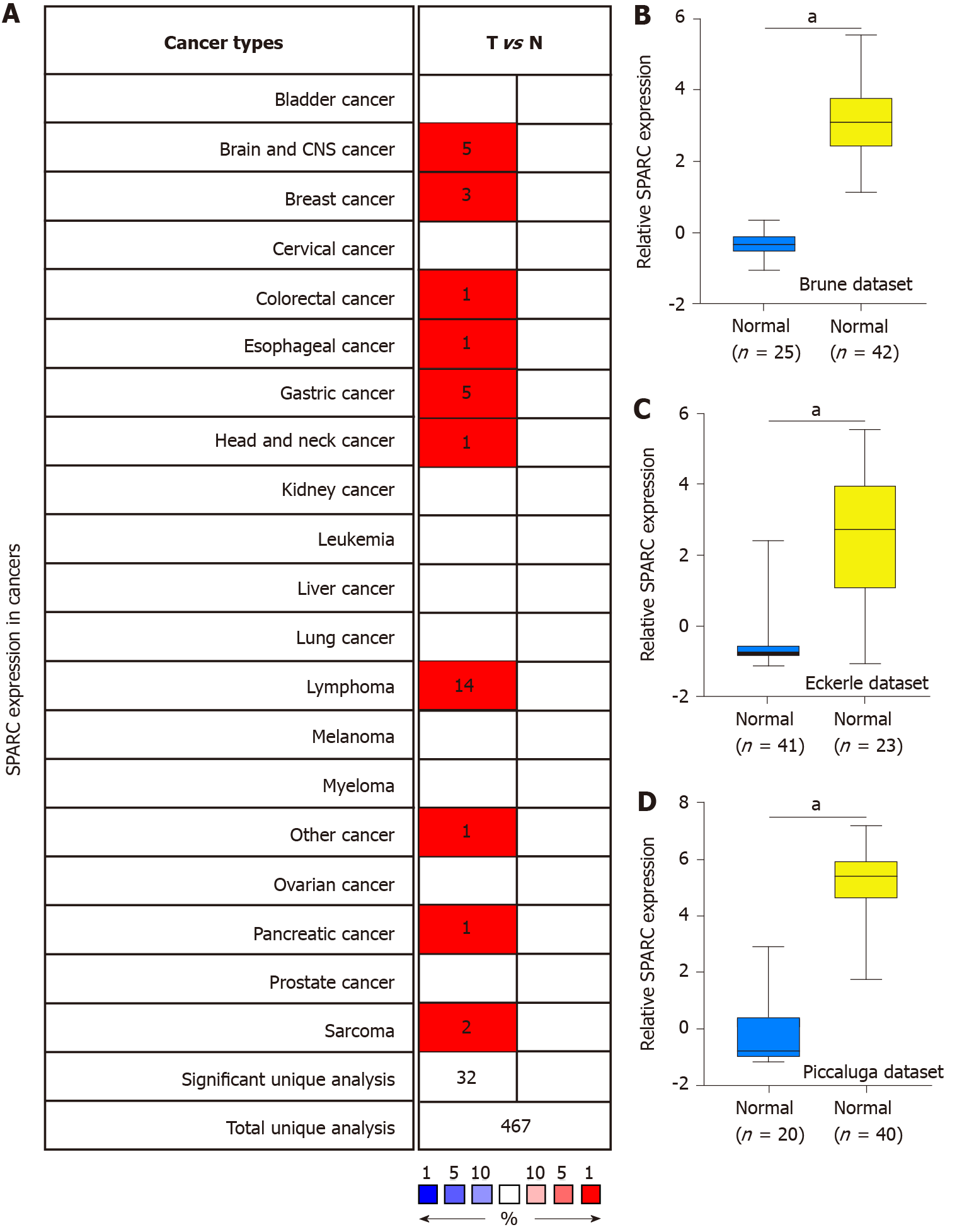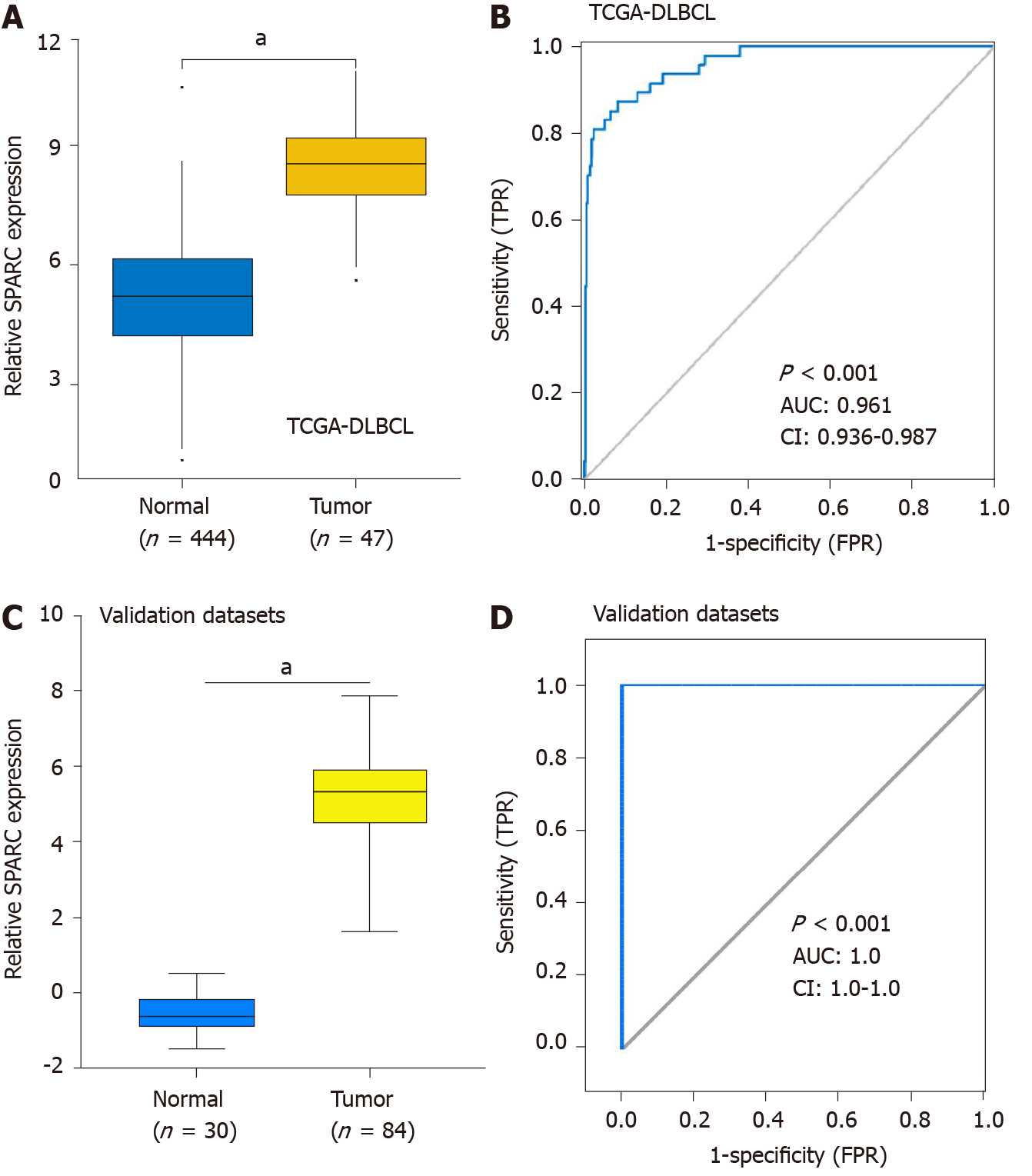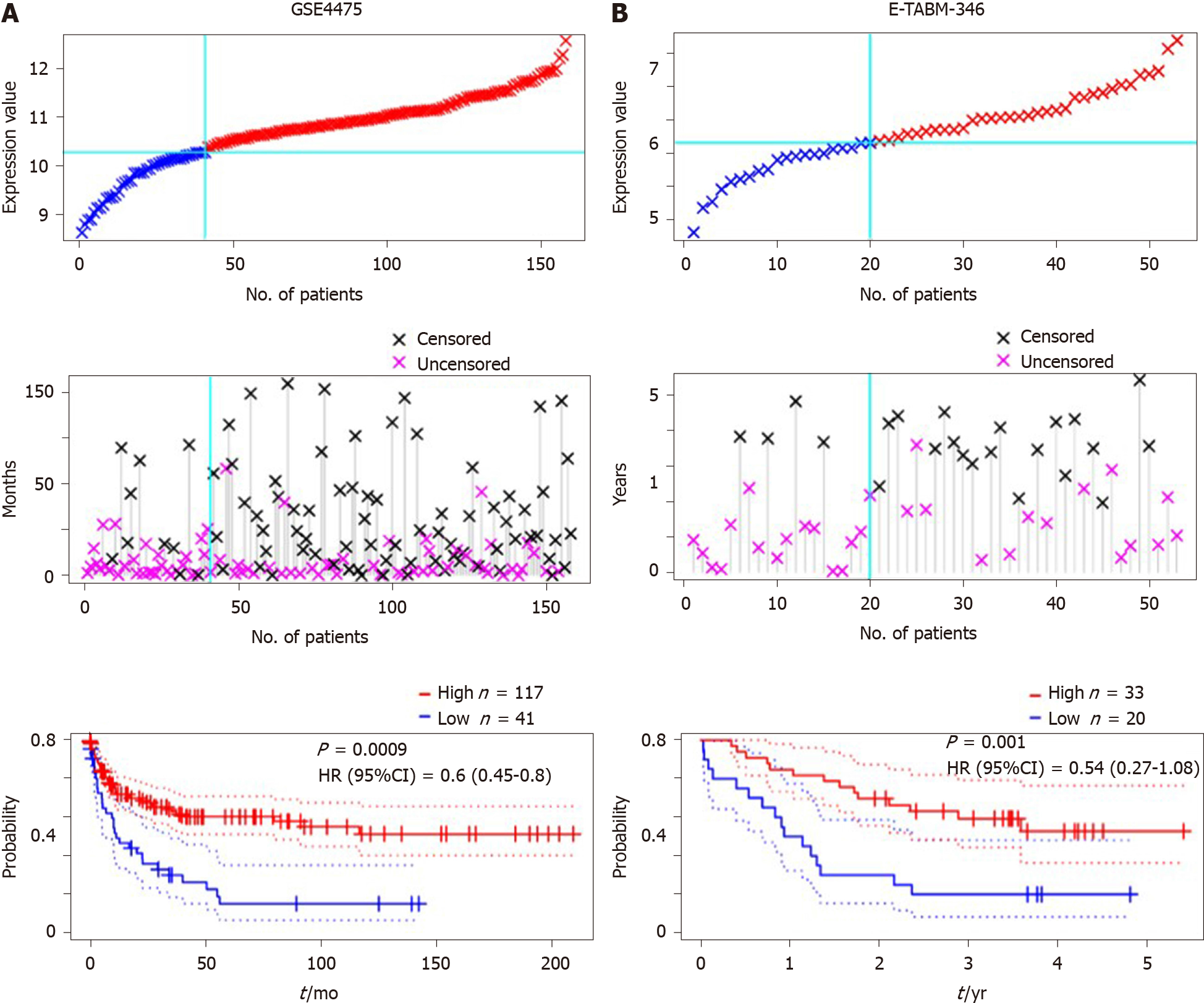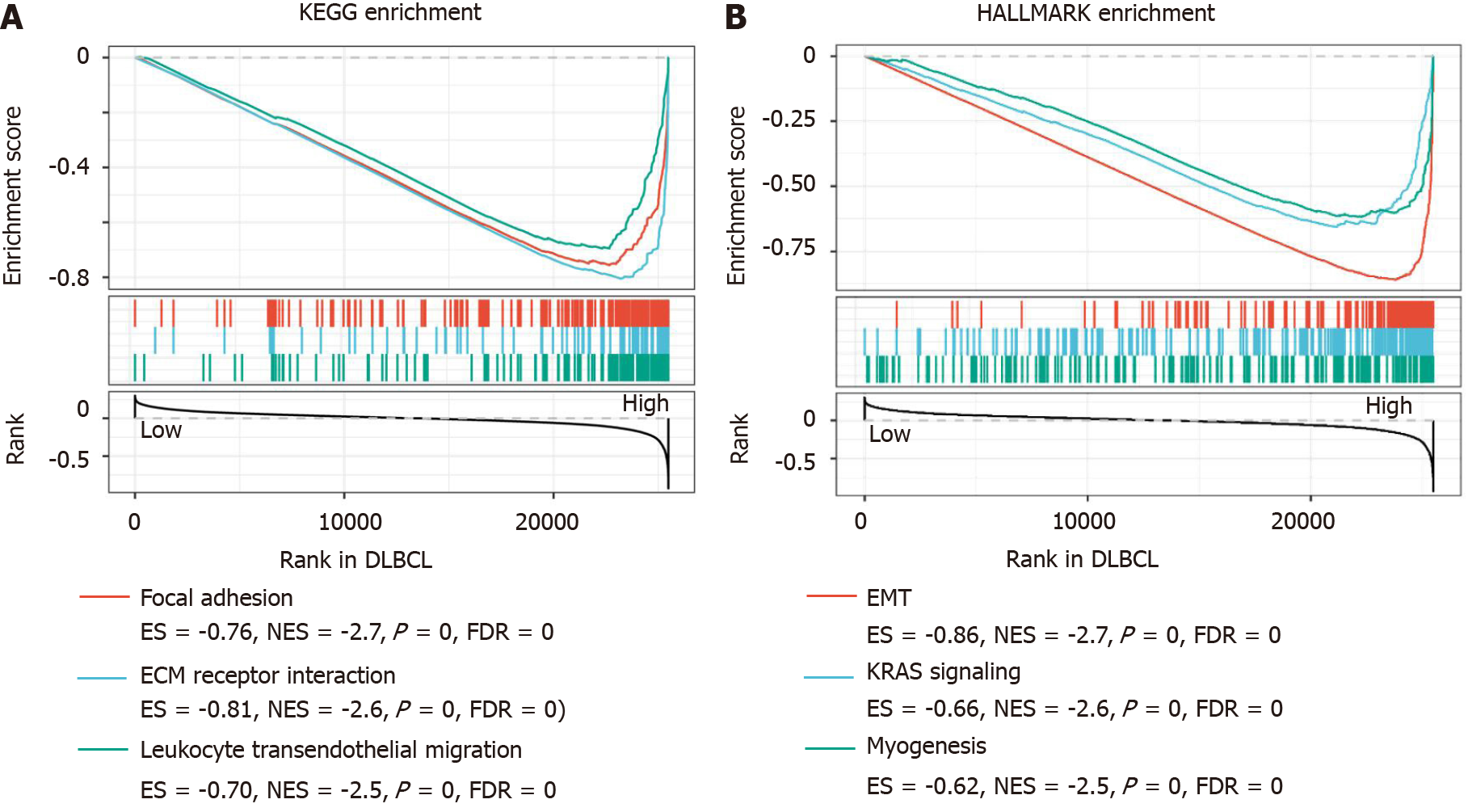Copyright
©The Author(s) 2021.
World J Clin Cases. Aug 6, 2021; 9(22): 6287-6299
Published online Aug 6, 2021. doi: 10.12998/wjcc.v9.i22.6287
Published online Aug 6, 2021. doi: 10.12998/wjcc.v9.i22.6287
Figure 1 Significant expression of secreted protein acidic and rich in cysteine in diffuse large B-cell lymphoma.
A: A total of 467 unique datasets were included to evaluate the expression difference of secreted protein acidic and rich in cysteine (SPARC) in pan-cancers. The top 1% ranking datasets were shown, and the fold change was set as over twice; B: The Brune dataset including different types of lymphoma was included to analyze the SPARC expression (aP < 0.001 vs control group); C: The SPARC mRNA expression was evaluated in the Eckerle dataset of lymphoma (aP < 0.001 vs control group); D: The SPARC mRNA level was confirmed with 200665_s_at in the lymphoma (aP < 0.001 vs control group). aP < 0.001 was considered statistical difference. T vs N: Tumor vs Normal.
Figure 2 Specific overexpression of secreted protein acidic and rich in cysteine in diffuse large B-cell lymphoma.
A: The Basso dataset including different types of lymphoma was included to evaluate the secreted protein acidic and rich in cysteine (SPARC) mRNA expression (aP < 0.001 vs control group); B: The mRNA expression of SPARC in the diffuse large B-cell lymphoma (DLBCL) was confirmed in the Compagno lymphoma dataset (aP < 0.001 vs control group); C: Alizadeh lymphoma dataset (aP < 0.001 vs control group); D: Rosenwald dataset (aP < 0.001 vs control group), and the normal lymphocytes were set as the normal control. aP < 0.001 was considered statistical difference.
Figure 3 Diagnostic value of secreted protein acidic and rich in cysteine in diffuse large B-cell lymphoma.
A: The mRNA level of secreted protein acidic and rich in cysteine (SPARC) was confirmed with The Cancer Genome Atlas (TCGA)-diffuse large B-cell lymphoma (DLBCL) database (aP < 0.001 vs control group); B: The receiver operating characteristic (ROC) analysis was conducted with the TCGA-DLBCL database; C: The validation datasets including the Compagno and Brune DLBCL datasets were adopted to validate the SPARC expression (aP < 0.001 vs control group); D: The ROC analysis was performed to evaluate the diagnostic value of SPARC for the DLBCL. aP < 0.001 was considered statistical difference. AUC: Area under curve; CI: Confidence interval; TPR: True positive rate.
Figure 4 High expression of secreted protein acidic and rich in cysteine predicted a favorable prognostic biomarker for the diffuse large B-cell lymphoma.
A: Patients from The Cancer Genome Atlas-diffuse large B-cell lymphoma (DLBCL) were included to evaluate the overall survival based on the secreted protein acidic and rich in cysteine (SPARC) expression; B: The receiver operating characteristic analysis of SPARC as a prognostic marker for the DLBCL in different time of follow-up. AUC: Area under curve; HR: Hazard ratio.
Figure 5 Validation of secreted protein acidic and rich in cysteine as a favorable prognostic biomarker for diffuse large B-cell lymphoma.
A: The GSE4475; B: E-TABM-346 datasets were adopted to draw the overall survival curve, and high or low groups were defined based on the expression value of secreted protein acidic and rich in cysteine; the survival status is shown in the middle panel. The overall survival cure was drawn based on the expression value and survival status. CI: Confidence interval; HR: Hazard ratio.
Figure 6 Gene Set Enrichment Analysis enrichment analysis based on secreted protein acidic and rich in cysteine of the diffuse large B-cell lymphoma.
A, B: The Kyoto Encyclopedia of Genes and Genomes (KEGG) (A) and HALLMARK (B) enrichment modules were adopted to evaluate the enriched network. DLBCL: Diffuse large B-cell lymphoma; ES: Enrichment score; FDR: False discovery rate; NES: Normalized enrichment score.
- Citation: Pan PJ, Liu JX. Diagnostic and prognostic value of secreted protein acidic and rich in cysteine in the diffuse large B-cell lymphoma. World J Clin Cases 2021; 9(22): 6287-6299
- URL: https://www.wjgnet.com/2307-8960/full/v9/i22/6287.htm
- DOI: https://dx.doi.org/10.12998/wjcc.v9.i22.6287














